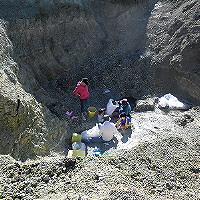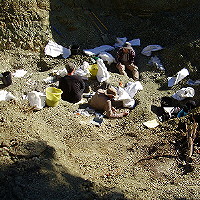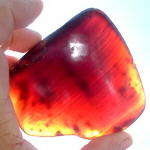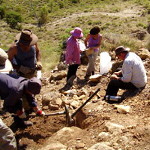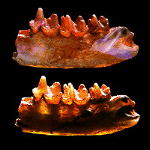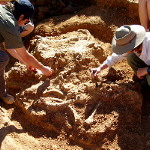|
Field trip to MurgonBy Phil Creaser A major trip was undertaken recently to collect more fossiliferous sediments from Eocene clays near the town of Murgon in Queensland. The clays have been dated at 54.6 my old and the fossil assemblage has produced a diverse and significant assemblage of fossils. As well as fish, turtles and crocodiles the sediments have also yielded frogs, snakes and non-marine birds. However, the most significant fossils are Australia’s oldest marsupials, an archaic non-flying placental mammal, the world’s oldest songbird and one of the world’s oldest bats. The depositional environment for these fossils is believed to be a lake or swamp. Most of the fossils are to be found in one level of the sequence of clays and the recent trip collected from this level. A number of large turtle and crocodile fragments were recovered during the trip as well as a number of bird fossils. However, the small teeth and other fragments from the marsupials and the mammals are not easily seen when collecting in the field but are only identified later following processing and sorting. Material collected from previous field trips is currently being processed and the new material will be processed after it has been prepared. |
Latest news
|

